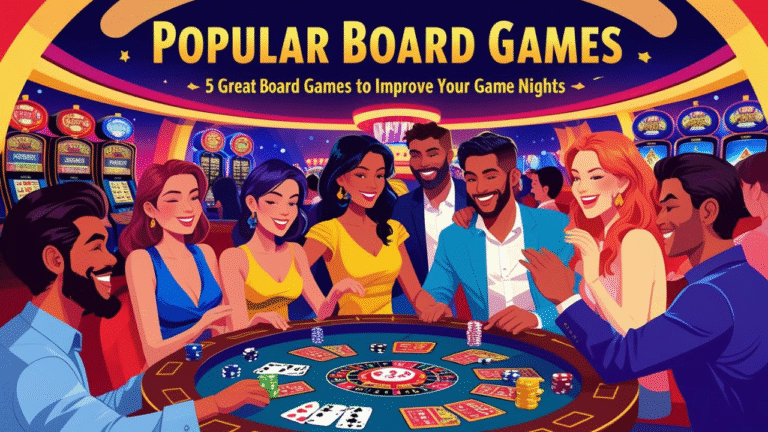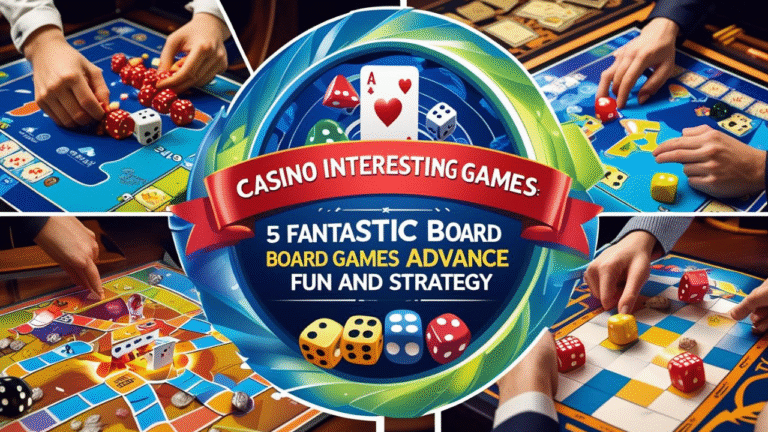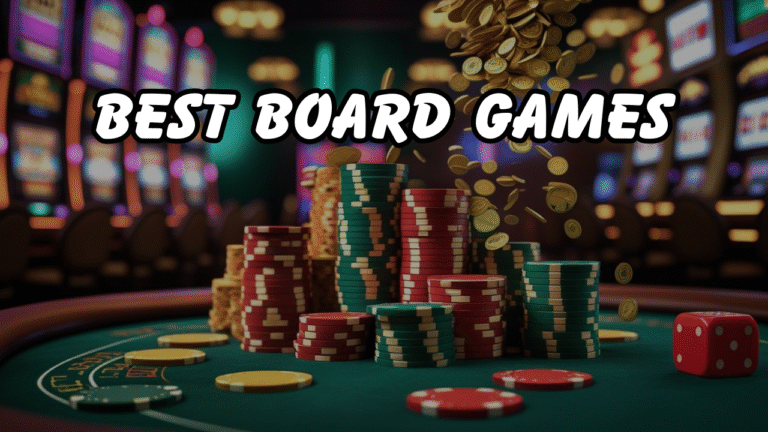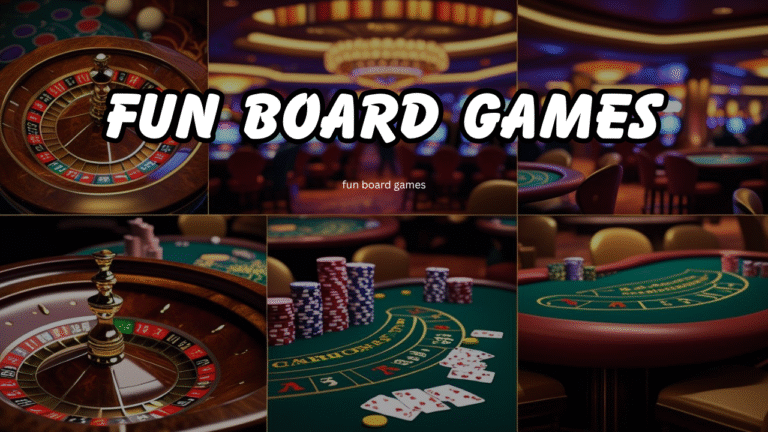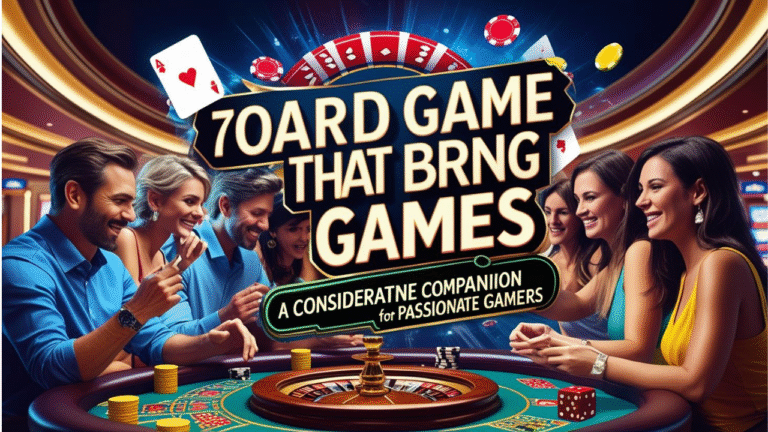Introducing
Classic Board Games: Long pillars of enjoyment, knowledge, and social interaction—classical board games have Having spent almost 10 years working in the gaming industry, as a senior content writer allows me to value the continuous impact these games have on following generations of gamers. In a time where screens govern more and more, they test our brains, foster close relationships, and have ageless appeal.
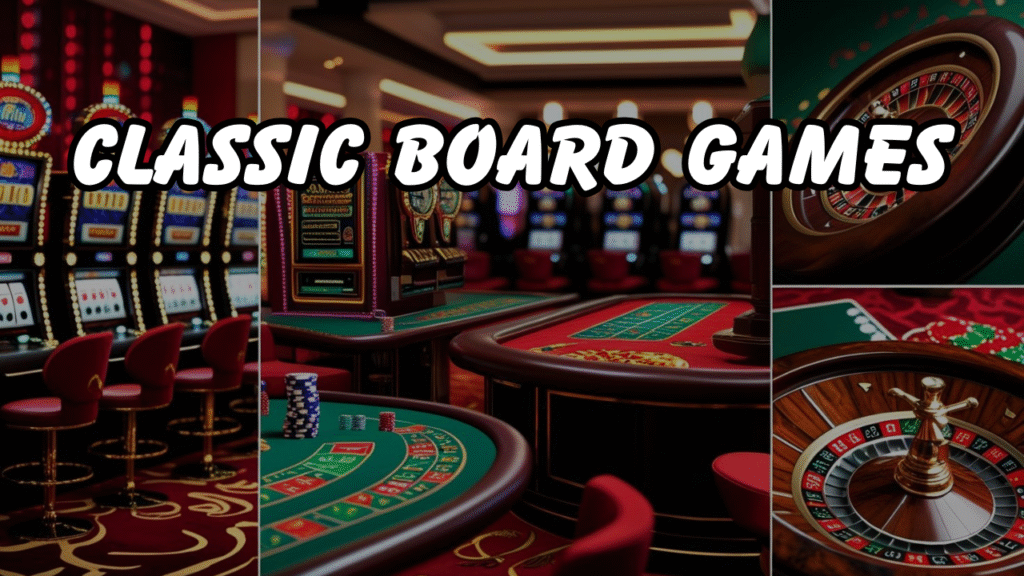
Covering their historical background, strategic depth, and unique features, I will look at eight of the most significant classic board games in this in-depth study. To enhance your gaming experiences, this professional and authorized essay provides an advanced analysis, useful guidance, and a complete FAQ.
Eight Fantastic Board Games Designed to Inspired Strategic Excellence
Considered as the king of strategic games, chess has centuries of background and a reputation for fostering critical thinking, intelligence, and patience. Its straightforward yet strong mechanics compel players to acquire offensive and defensive strategies, therefore enhancing its value as a basic education tool.
2. Slabbing
Along with language skills, Scrabble provides tactical orientation. Drawing both competitive and leisureful players, the game’s emphasis on word-building and spatial awareness encourages reading and imagination.

3. Monopolistically
Negotiating and economic strategy are underlined by monopoly. Players buy, trade, and develop properties to outbid their opponent. Its conventional form sharpens judgment capacity and increases financial consciousness.
4. Variability
Risk pulls people into a diplomatic and conquest universe. For decades, gamers have been intrigued by its blend of luck and aptitude produced by strategic planning and dice-based battle.

5. cluedo, or clue
Clue takes players into a murder mystery requiring both logical deduction and skillful interrogation. Its well-known whodunit technique challenges players to eliminate suspects and gather hints, therefore honoring good recall and observation.
Six. Warship
Battleship combines the concept of secret knowledge into a fascinating guessing game. Gamers utilize tactics to locate and destroy their opponent’s fleet, therefore cultivating spatial awareness and patience.
Seven: Backgammon
Among the first known board games, backgammon combines strategy with luck. Its combination of piece moves and dice rolls encourages controlled risk and calculated aggressiveness.
Eight: Connect Four
Engaging a fast yet intense wits war, players in Connect Four seek to connect four discs vertically, horizontally, or diagonally. It’s a popular for all ages since its basic principles disguise a lot of strategic alternatives.
Useful Guide for Master Classic Boards Games
grasp the regulations completely
Make sure your party and you thoroughly understand the rules of the game before starting play. This minimizes uncertainty and maximizes pleasure.
study fundamental techniques
Every great board game contains core tactics: opening moves in chess, Monopoly’s property acquisition, or Battleship’s risk assessment. Learn these principles to improve your game.
Review your enemies
Track the behaviors, strengths, and limitations of your opponent. Changing your approach to take advantage of their preferences gives a degree of sophisticated performance.
Balance Aggression and Defense
Effective players understand when to attack and when to guard. Learn to strike the correct balance to prevent overreaching and exposing yourself.
Step 5:
Reflect After Each Game Post-game analysis sharpens your talents. Identify what worked, what didn’t, and how you may improve in future sessions.
Study: Why Still Relevant Classic Board Games?
Classic board games flourish because they flawlessly mix accessibility with strategic depth. Games like Chess and Backgammon date back millennia yet remain fresh via their intricate strategy and nearly endless variability.
Meanwhile, Monopoly and Risk transmit social and economic principles pertinent today—that of risk management, financial planning, and negotiating. Scrabble and Clue bridge the gap between education and enjoyment, fostering literacy and logical reasoning in an engaging style.
Beyond gaming mechanics, these titles inspire social interaction, collaboration, and friendly competition—essential factors that digital entertainment sometimes ignores. Their real, tactile character fosters shared experiences and true human encounters that no screen can duplicate.
Questions of Frequencies
Why are enduringly popular classic board games still so?
Classic board games thrive on their blend of simplicity, challenge, and social interaction. Their worldwide appeal guarantees their relevance and value over decades.
Can conventional board games teach anything?
Indeed. Many classic games promote literacy, numeracy, critical thinking, and social skills, making them great learning tools.
How should I introduce to new players classic board games?
Begin with a full explanation of the rules, followed by a practice round. Patience and encouragement are key to creating confidence and excitement among starting players.
Conclusion
Traditional board games still spark strategic brilliance and deep ties spanning many generations. By understanding their mechanics, historical relevance, and the lessons they give, players can unlock new levels of enjoyment and mastery.

Use the above given practical suggestions to develop your abilities and guarantee that every gaming night is unforgettable and educational. One action at a time, let these eight ageless masterpieces challenge your mind and connect your gaming community.

